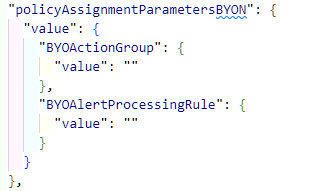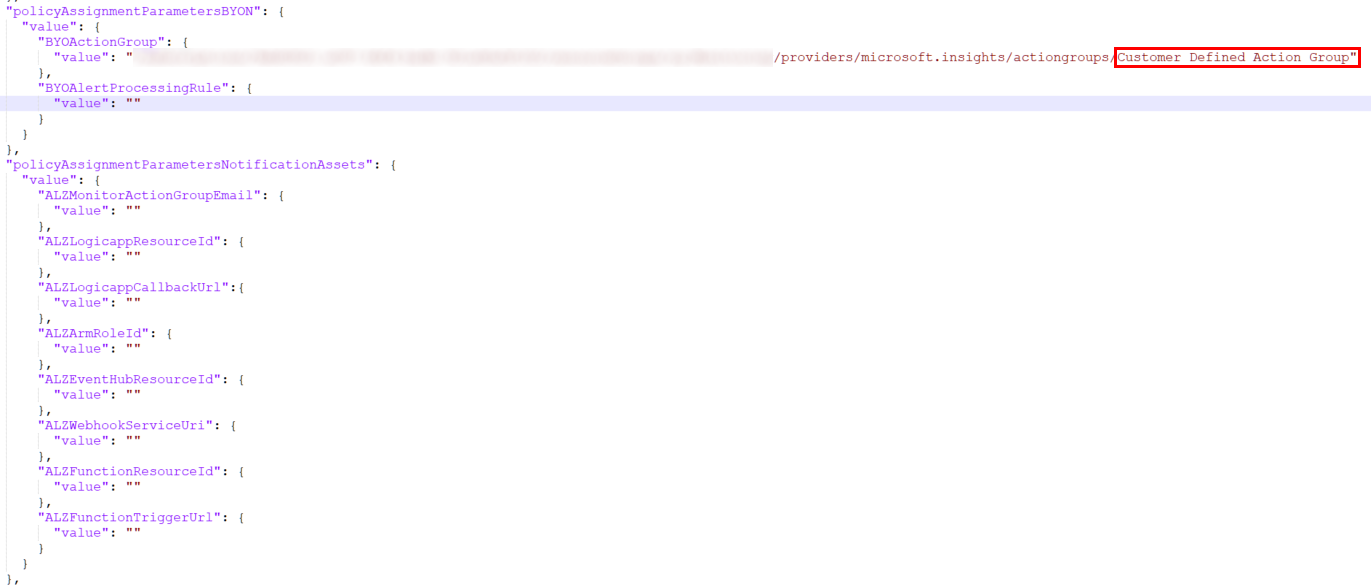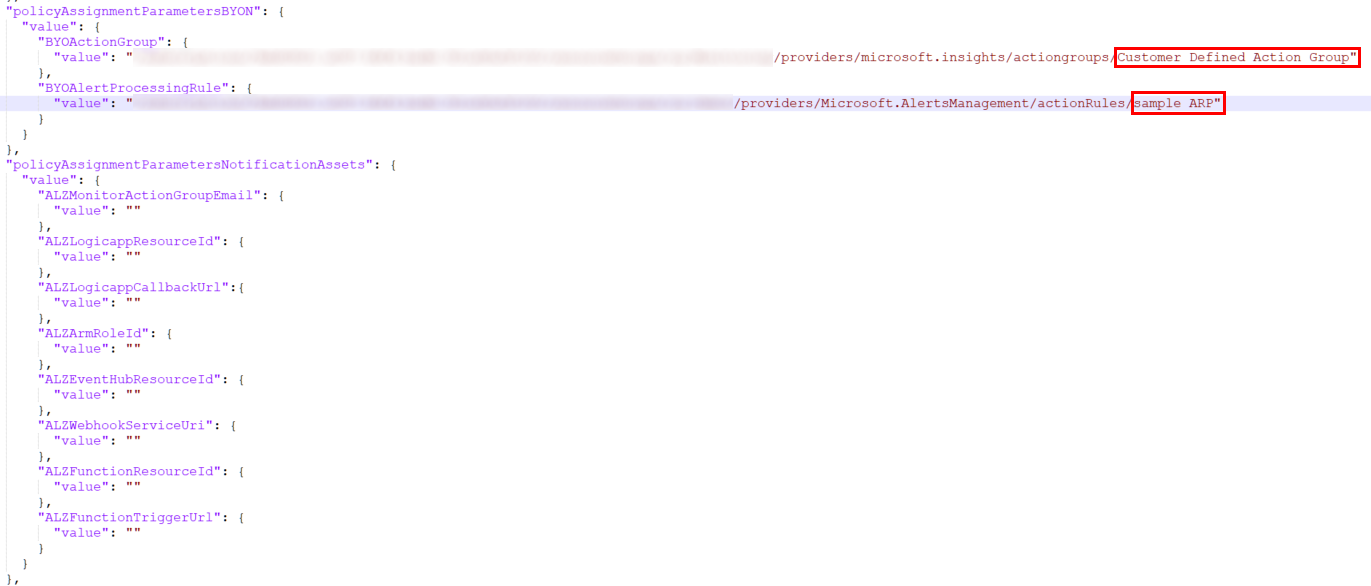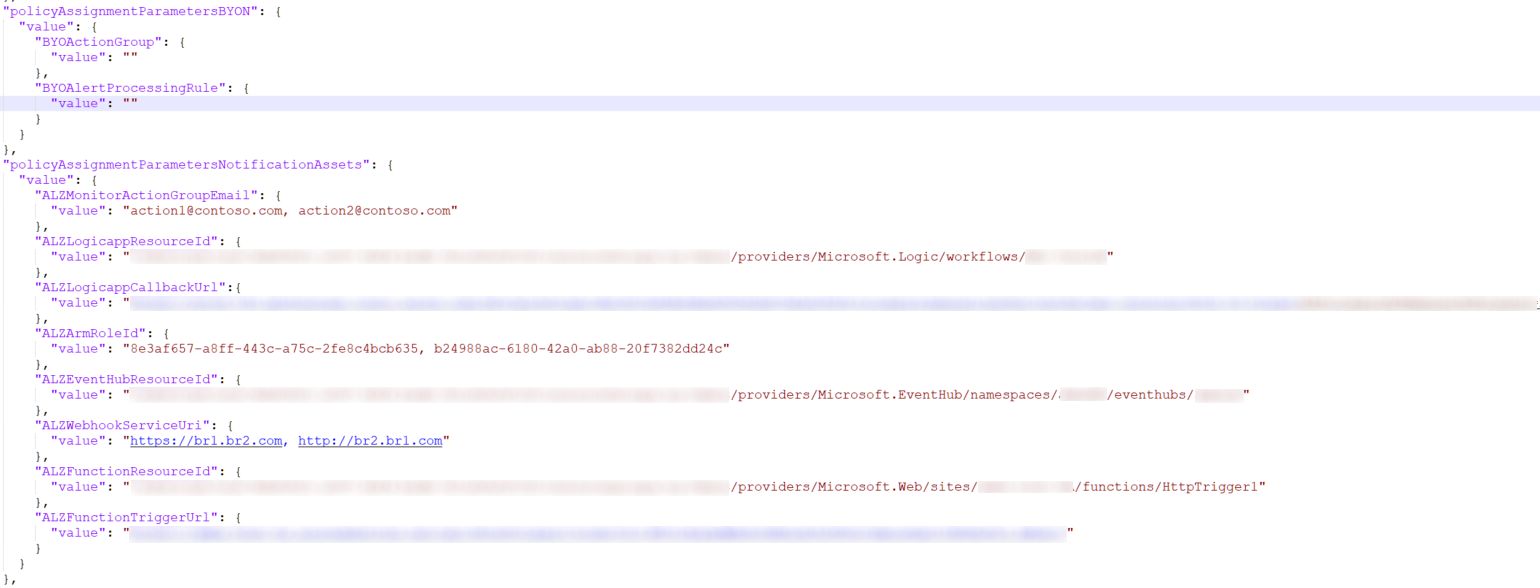Bring Your Own Notifications (BYON)
The Bring Your Own Notifications (BYON) feature, available with release 2024-04-12, allows brownfield customers to use their existing Action Groups (also known as AGs) and Alert Processing Rule (also known as APR) not forcing the use of notification assets deployed by both the Notification Assets initiative and the Deploy Service Health Action Group policy definition present in the ALZ pattern. It also allows Brownfield customer who deployed the ALZ pattern when this feature wasn’t available, to switch to it.
The BYON feature works by setting the necessary parameter values before running the ALZ pattern deployment. Customers have the choice to either specify one or more existing AGs and one APR or to enter target values so the AG and the APR will be created using the actions specified in the parameter file (including the option to not specify any value and creating an empty AG).
Should Brownfield customers decide to use their own notification assets, it will be sufficient to enter the AG resource IDs (separated by comma) and the APR resource ID values in the parameter section called policyAssignmentParametersBYON, leaving the policyAssignmentParametersNotificationAssets with no values:

Differently if they decide to use the assets provided by AMBA or if they’re Greenfield customers, they’ll just leave the policyAssignmentParametersBYON section with no values and populate the section called policyAssignmentParametersNotificationAssets:

When running the deployment, the deployment code has conditions that control the deployment behavior according to the following three possible cases:
A. Use your own AGs with the AMBA APR. In this scenario, the deployment we will:
- Not deploy the AMBA SH AG
- Deploy the AMBA APR with customer’s AGs in it
- Deploy SH alerts pointing to customer’s AGs
Here’s an example of the parameter file with the relevant sections populated for this scenario:

B. Use your own AGs and APR. In this scenario, the deployment we will:
- Not deploy any AMBA notification AG or ARP (since it’s not physically linked to any alert) assets or AMBA SH AG
- Deploy SH alerts pointing to customer’s AGs
Here’s an example of the parameter file with the relevant sections populated for this scenario:

C. Use AMBA notification assets. In this scenario, the deployment will:
- Deploy notification assets for SH alerts and wide notifications.
Here’s an example of the parameter file with the relevant sections populated for this scenario:

The conditional deployment behavior discussed earlier, allows brownfield customers to switch from the initial notification assets scenario (the only one available until release 2024-03-01) to the new BYON after deployment and viceversa. Should customers decide to switch, it will be enough to:
- change the values in the parameter file to match one of the three cases previously discussed
- redeploy the ALZ pattern
- run the remediation for both Notification Assets and Alerting-ServiceHealth policy initiatives
- remove notification assets deployed by ALZ patterns using the Remove-AMBANotificationAssets.ps1 script (*** only if moving from ALZ notification assets to BYON)
The code will reconfigure the Service Health alerts to use either the customer’s action groups to the ALZ pattern notification assets according to the selected case.
